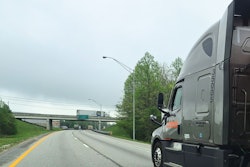Breaking up sedentary trips with short walks and exercise can help
prevent blood clots in your legs.
Sitting behind the wheel for hours at a stretch can cause more harm than simply making your joints stiff. Long periods without moving can increase the risk that the blood in your legs will pool and clot.
Clotting is more threatening if it becomes thrombophlebitis – when a blood clot and inflammation develop in one or more veins, typically in the legs. On rare occasions, thrombophlebitis occurs in the arms, but a blood clot in the upper leg is more likely to cause complications.
The affected vein may be near the surface or deep within a muscle (deep vein thrombosis or DVT). Clots usually dissolve and are reabsorbed by the body without danger. But DVTs can cause one of two scary situations.
First, the clot could block the blood flow through a vein or artery, causing circulation problems. Second, a clot can break free and travel through the bloodstream until it lodges in a smaller blood vessel and blocks the blood supply. That’s known as an embolism. Nearly 20 percent of untreated DVTs located above the calf embolize to the lung, and 10 percent to 20 percent of those are fatal. More than 90 percent of life-threatening pulmonary emboli arise from DVTs in the legs.

You’re already more at risk for developing blood clots if your driving keeps you in an immobile position for a long time. Furthermore, if you fall into three or more of these categories, you are considered susceptible: you are obese or are 40 years or older, you have varicose veins or a family history of blood clots, you smoke, you have had major surgery, or you have been a victim of stroke, paralysis, cancer, severe trauma, congestive heart failure, sickle cell anemia or chronic respiratory failure.
Here are tips on how to protect yourself from clot-related problems:
If you notice any of these symptoms, don’t take the typical stance and just tough it out. Your life could be at stake.
A HOT IDEA
Studies show that capsaicin, the natural heat-generating ingredient in hot peppers, may help to prevent blood clots and heart disease by increasing blood flow. Studies show that capsaicin promotes circulation through its natural ability to conduct heat and inhibit nerve receptors.
RESOURCES
These health information websites can help you learn more about blood clots and emboli and how to avoid them:
www.ochsner.org
www.heartcenteronline.com
www.emedicinehealth.com
www.mayoclinic.com
www.healthatoz.com








